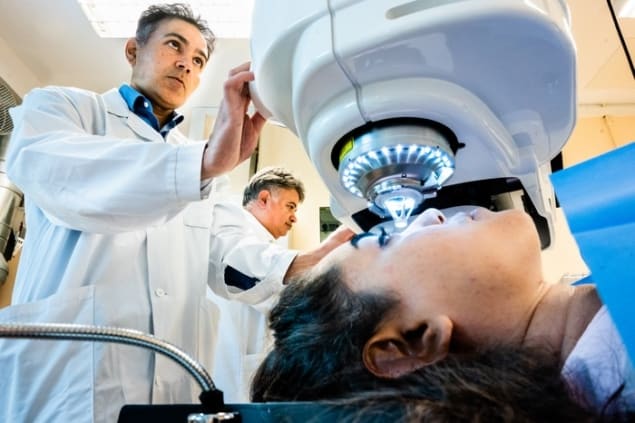
A team in Sweden, Iran and India has developed a new way to produce artificial corneas, out of a purified by-product of the food industry. The researchers were led by Mehrdad Rafat at LinkoCare Life Sciences and Linköping University. They showed that their implants were strong and resistant to degrading and could fully restore patients’ sight through minimally invasive surgery.
The cornea is a transparent, dome-shaped layer at the front of the eye, responsible for focusing incoming light through the pupil. When its structure becomes damaged or diseased, its resulting loss in transparency and refractive capabilities will often cause blindness.
These defects are now estimated to affect some 12.7 million people worldwide. One million new cases emerge each year and these disproportionately affect people in low and middle-income countries. Although these conditions can be treated through transplants, there is currently just one cornea available for every 70 patients who need them, creating an urgent need for improved access.
Rigid, transparent structures
Corneas are mainly composed of collagen. This is a protein made from strong molecular fibres, each just around 100 nm in diameter. By forming strong chemical bonds, or “cross-links”, with neighbouring fibres, they pack themselves closely together, forming rigid, transparent structures.
In one previous study, Rafat’s team aimed to recreate these cross-links using loose human collagen. However, this approach has drawbacks. The implants could only be produced in small quantities, and they were mechanically weak, degraded quickly and could only be implanted with invasive surgery, which took a long time to heal.
In their latest study, the researchers addressed these limitations using medical-grade collagen sourced from pig skin: a purified by-product of the food industry. To treat this loose collagen, they used a combination of chemical and photochemical techniques to establish robust cross-links between the fibres.
Strong and stable
Their approach improved the material’s strength, stability and resistance to degradation, without sacrificing its ability to transmit and refract visible light. This meant that their artificial corneas could be stored for up to two years before being implanted. This provides plenty of time to transport the corneas into less developed regions, where the demand is often highest. What is more, the implant could be inserted into a patient’s existing cornea through a small incision, making the procedure far less invasive.

Sticky biomaterial could repair corneal injuries in patients
After initial tests, the technique was implemented by surgeons in Iran and India, who implanted the treated collagen into the eyes of 20 patients with diseased or damaged corneas. Over the next two years, not a single patient reported any adverse effects from the surgery. Not only had the implants been readily accepted by their bodies, they had also restored the thickness and curvature of their corneas to normal.
After two years, all 14 patients who had been completely blind before the surgery were completely cured, and three had even gained perfect 20/20 vision. Based on this success, Rafat’s team hopes that the new approach could lead to a breakthrough in treatment options for the many people in urgent need of new corneas – restoring sight to millions of people in the developing world.
The research is described in Nature Biotechnology.



